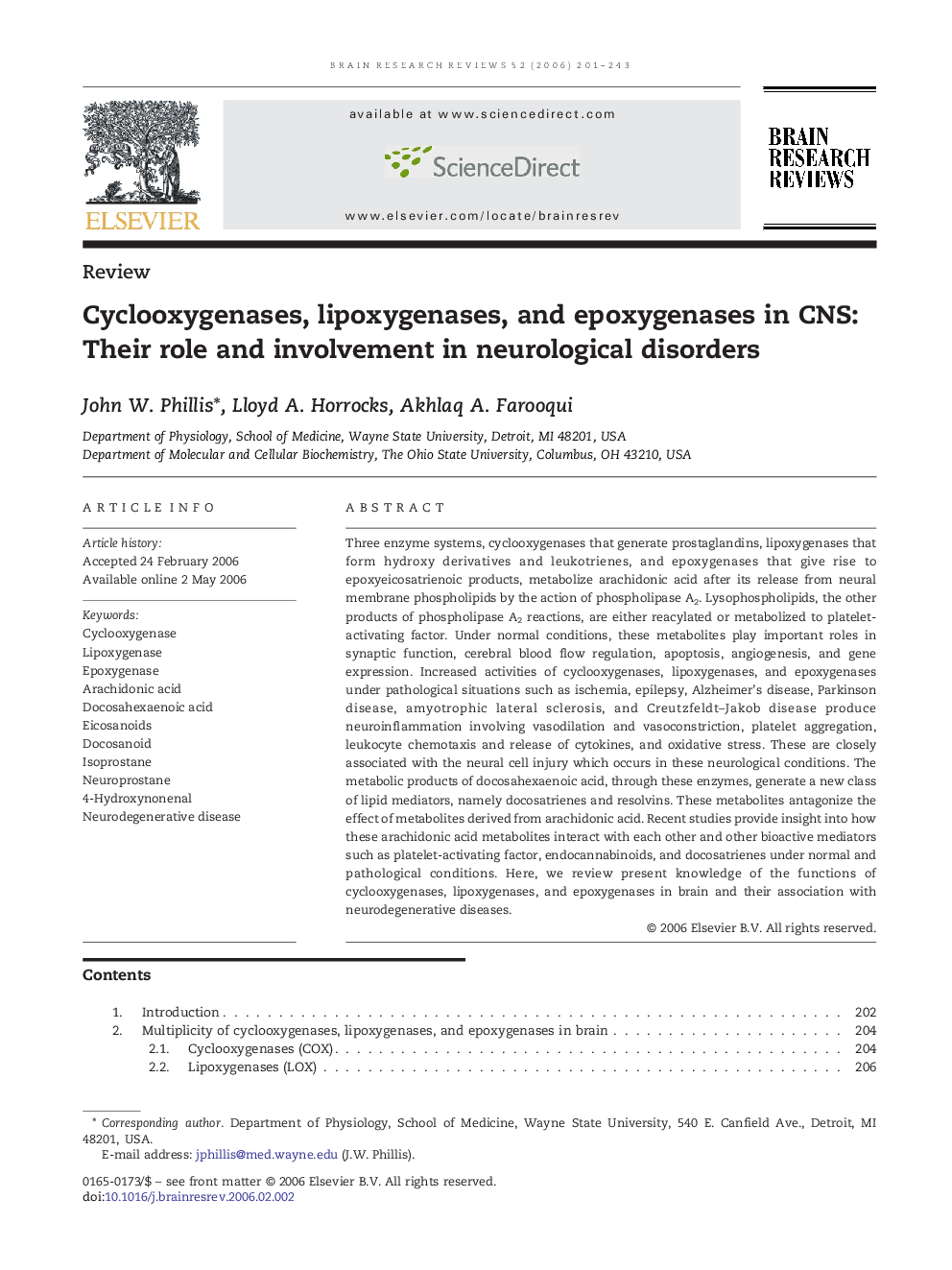| Article ID | Journal | Published Year | Pages | File Type |
|---|---|---|---|---|
| 4334087 | Brain Research Reviews | 2006 | 43 Pages |
Three enzyme systems, cyclooxygenases that generate prostaglandins, lipoxygenases that form hydroxy derivatives and leukotrienes, and epoxygenases that give rise to epoxyeicosatrienoic products, metabolize arachidonic acid after its release from neural membrane phospholipids by the action of phospholipase A2. Lysophospholipids, the other products of phospholipase A2 reactions, are either reacylated or metabolized to platelet-activating factor. Under normal conditions, these metabolites play important roles in synaptic function, cerebral blood flow regulation, apoptosis, angiogenesis, and gene expression. Increased activities of cyclooxygenases, lipoxygenases, and epoxygenases under pathological situations such as ischemia, epilepsy, Alzheimer's disease, Parkinson disease, amyotrophic lateral sclerosis, and Creutzfeldt–Jakob disease produce neuroinflammation involving vasodilation and vasoconstriction, platelet aggregation, leukocyte chemotaxis and release of cytokines, and oxidative stress. These are closely associated with the neural cell injury which occurs in these neurological conditions. The metabolic products of docosahexaenoic acid, through these enzymes, generate a new class of lipid mediators, namely docosatrienes and resolvins. These metabolites antagonize the effect of metabolites derived from arachidonic acid. Recent studies provide insight into how these arachidonic acid metabolites interact with each other and other bioactive mediators such as platelet-activating factor, endocannabinoids, and docosatrienes under normal and pathological conditions. Here, we review present knowledge of the functions of cyclooxygenases, lipoxygenases, and epoxygenases in brain and their association with neurodegenerative diseases.
